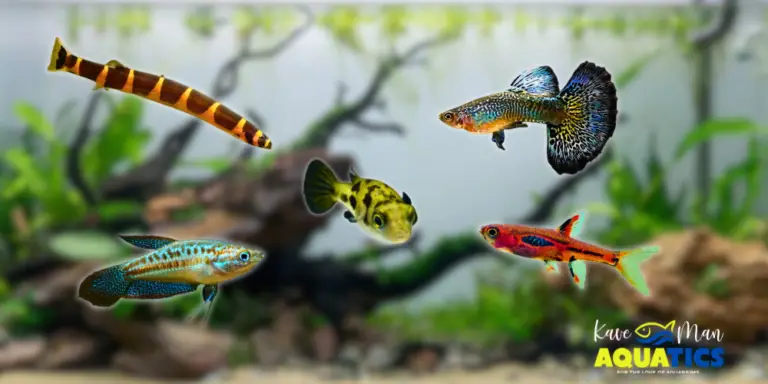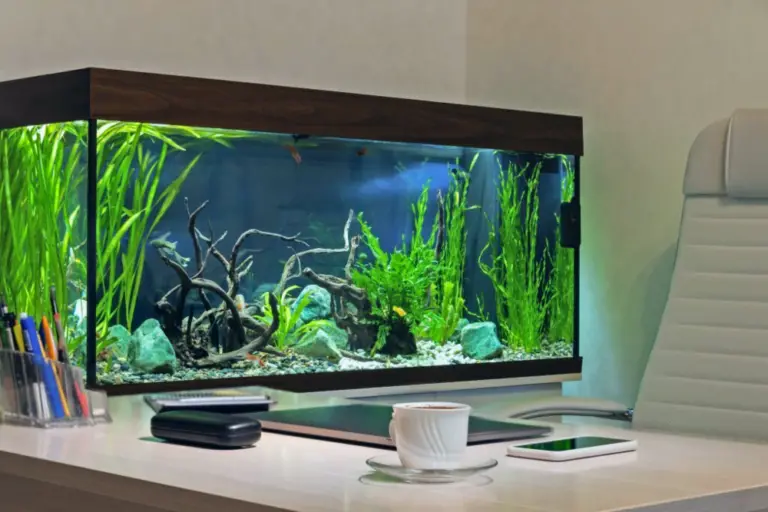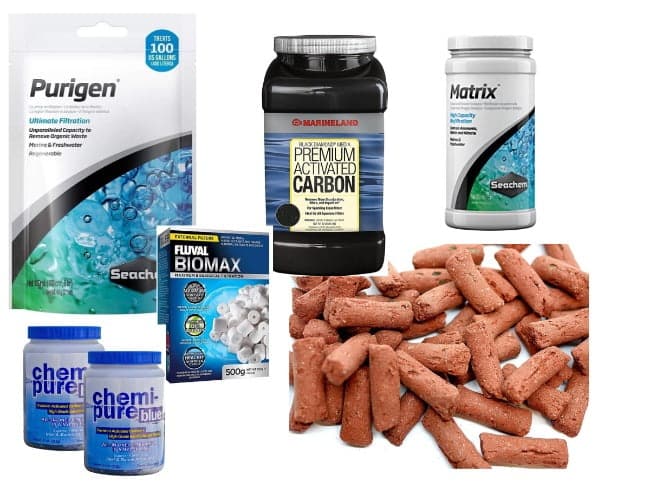8 Steps to Acclimate New Fish to Your Home Aquarium
Welcoming new fish into your aquarium is an exciting experience! But before you add them to your home aquarium, you must acclimate them! Acclimation is an important step of the introduction process and can impact your fishy companions’ health and well-being. In this guide, we’ll take you through each step on how to acclimate new fish to your aquarium. But before we start…
Why Should You Acclimate New Fish in the First Place?
Acclimating new fish to your aquarium is crucial for their health and well-being due to the significant differences in water chemistry, temperature, and environment between their previous habitat and your tank. Sudden exposure to these changes may lead to stress, shock, and even death in fish.
Acclimation allows the fish to adjust to their new surroundings gradually. A gradual introduction can help minimize stress and increase their chances of survival. It also helps prevent potential health issues by allowing the fish to adapt to the water parameters of your aquarium, such as pH, hardness, and temperature.
By properly acclimating new fish, you create a smoother transition, reduce the risk of disease transmission, ensure optimal conditions for growth and development, and ultimately promote the overall well-being of your aquatic pets.
8 Steps to Acclimate New Fish
Without further ado, here is how you can acclimate new fish to your home aquarium in 8 simple steps.

1. Prepare the quarantine tank (optional)
If you’re committed to maintaining a healthy aquarium ecosystem, setting up a quarantine tank is a wise investment of your time and resources. This separate tank provides a safe space to monitor and quarantine new arrivals before introducing them to your main aquarium. Ideally, the quarantine tank should be equipped with a filter, heater, and sufficient hiding places for the fish to reduce stress.
2. Turn off lights
Dimming or turning off the lights in both the quarantine tank (if applicable) and the main aquarium is a crucial step in minimizing stress during the acclimation process. Fish are sensitive to sudden changes in light intensity, and reducing brightness can help ease their transition into their new environment.
3. Float the bag
Once you’ve brought your new fish home, it’s time to initiate the acclimation process. Begin by floating the sealed bag containing the fish in the aquarium water. This allows the temperature inside the bag to gradually equalize with the temperature of the aquarium water, preventing thermal shock.
4. Add aquarium water
After approximately 15-20 minutes of floating, it’s time to start drip acclimation. To do this, open the bag and roll down the top edge to create a collar. Secure the collar in place to keep the bag open. Then, using airline tubing or a clean siphon tube, create a slow drip from the aquarium into the bag. Aim to add small amounts of aquarium water to the bag every 5-10 minutes, gradually increasing the volume of water in the bag.
5. Check temperature
Throughout the acclimation process, it’s essential to monitor the temperature of the water inside the bag regularly. Use a reliable aquarium thermometer to ensure that the water temperature remains stable and matches that of the aquarium.
6. Net the fish
Once the water volume in the bag has doubled or tripled, it’s time to transfer the fish from the bag to the aquarium. Use a soft net to gently scoop the fish out of the bag and carefully introduce it to its new home. Avoid adding water from the bag to the aquarium to minimize the risk of introducing pathogens.
7. Observe and monitor
After introducing the fish to the aquarium, take some time to observe its behavior closely. Pay attention to signs of stress or illness, such as rapid breathing, flashing, or hiding. Additionally, monitor water parameters such as ammonia, nitrite, and nitrate levels in the days following acclimation to ensure they remain within acceptable ranges.
8. Feed sparingly
In the first few days following acclimation, it’s best to feed the new fish sparingly. Overfeeding can lead to excess waste production and compromise water quality, potentially stressing the fish further. Offer small, easily digestible meals and remove any uneaten food promptly to maintain a clean and healthy environment for your fish.
FAQs
Got more burning questions in mind? Check the frequently asked questions below!

Q: How long should I quarantine new fish?
A: It’s recommended to quarantine new fish for at least 2 weeks to observe for any signs of illness before introducing them to your main aquarium.
Q: Can I acclimate fish directly from the store bag to the aquarium?
A: While it’s possible, it’s not recommended. The water in the store bag may have different parameters from your aquarium, and acclimating slowly helps reduce stress on the fish.
Q: What if my new fish appears stressed after acclimation?
A: Give the fish time to adjust, maintaining stable water conditions and minimizing disturbances. If stress persists, consult with an experienced aquarist or a veterinarian specializing in fish health.
Q: How often should I perform water changes in my aquarium?
A: Regular water changes are essential for maintaining water quality and ensuring the health of your fish. In most cases, performing a 10-20% water change every 1-2 weeks is sufficient, although the frequency may vary depending on factors such as tank size, fish stocking levels, and filtration system efficiency.
Q: What should I do if I notice signs of illness in my fish?
A: If you observe any abnormal behavior or physical symptoms in your fish, such as lethargy, loss of appetite, abnormal growths, or changes in coloration, it’s crucial to take action promptly. Quarantine the affected fish immediately to prevent the spread of disease to other tank inhabitants, and seek guidance from a qualified aquatic veterinarian or experienced aquarist to determine the appropriate course of treatment.
Q: How can I maintain optimal water parameters in my aquarium?
A: Regular monitoring of water parameters such as temperature, pH, ammonia, nitrite, and nitrate levels is essential for maintaining a healthy aquatic environment. Invest in reliable testing kits and perform routine water tests to ensure that parameters remain within acceptable ranges. Additionally, proper aquarium maintenance practices, including regular water changes, filter maintenance, and substrate vacuuming, can help prevent the buildup of harmful substances and maintain water quality.
Dive into Smart Fish-Keeping with Aquabuildr!
Congratulations! You now know how to acclimate new fish like a pro. Remember, taking the time to acclimate your new aquatic pals ensures a smoother transition and sets them up for a happy, healthy life in your aquarium.
If you want to take your fish-keeping game to the next level, why not explore Aquabuildr, our new fish-keeping app? With its intelligent algorithm, Aquabuildr takes the guesswork out of building and maintaining your aquarium. From suggesting compatible fish based on pH, temperature, and tank size to offering customized starter tanks, Aquabuildr has everything you need to create the perfect aquatic environment for your finned friends.
Download Aquabuildr for FREE on Google Play Store or Apple App Store today and feel the power of smart fish-keeping!
-
8 Steps to Acclimate New Fish to Your Home Aquarium
Learn how to acclimate new fish to your home aquarium like a pro! Our guide covers everything you need to know in 8 easy steps!







